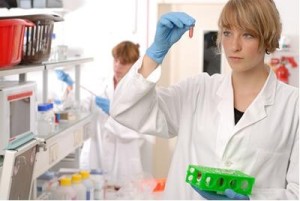As part of the U.S. Food and Drug Administration’s risk-based and preventive approach to food safety, which is at the core of the FDA Food Safety Modernization Act, the agency began developing a new, more robust surveillance sampling approach in 2014. As the agency moves forward with this approach, it will continue to refine procedures based on lessons learned. The goals of the surveillance sampling are to keep contaminated products from reaching consumers and to facilitate a greater understanding of hazards.
 FDA will publish information regarding test results on the web, including total number of samples collected/tested, and collection date, sample type, and pathogen detected for positive samples.
FDA will publish information regarding test results on the web, including total number of samples collected/tested, and collection date, sample type, and pathogen detected for positive samples.
The Sampling Approach
Under the new sampling approach, the FDA is collecting a statistically determined number of samples of targeted foods over a shorter period of time—12 to18 months—to ensure a statistically valid amount of data is available for decision making. The sampling approach will help the FDA determine if there are any common factors among positive findings such as season, region, and whether the product was produced domestically or imported. The FDA’s past approach to microbiological surveillance sampling has been to collect a relatively small number of samples for many different commodities over many years.
The sampling design for each food represents what U.S. consumers are likely to find in the marketplace. Accordingly, the agency has considered the volume of the target food that is imported and produced domestically and the number of states/countries that produce the target food.
During the first year of this new effort, the FDA focused on sprouts, whole fresh avocados, and raw milk cheese (aged 60 days). The FDA collected more than 800 samples total and tested them for Salmonella, Listeria monocytogenes and E. coli O157:H7. For fiscal year 2016, The FDA will sample and test cucumbers and hot peppers for Salmonella and E. coli O157:H7, taking 1,600 samples of each commodity. The agency also plans to test hot peppers for Shiga toxin producing E. coli. The FDA will conduct whole genomic sequence testing on any samples that test positive. In the future, the number of samples collected of a targeted commodity may vary, depending on the question(s) the FDA intends to answer. Data from the sampling assignments already conducted will be released soon.
The FDA will evaluate the data or results generated throughout the sample collection period and use the data to inform the agency’s short and longer term decision making. By developing these data sets, the FDA seeks to identify potential vulnerabilities and ways to enhance the food safety system.
Depending on the results, the FDA may react or take certain steps, such as:
- Decreasing sampling, if few positive samples are obtained;
- Implementing more targeted sampling if trends are identified; for example, if positive samples come from a specific geographic region, a specific facility, or during a particular season;
- Follow-up inspections;
- Working with state or international regulatory partners to take corrective actions and implement preventive controls;
- Developing new or enhanced industry guidance; and
- Conducting outreach and information sharing to better protect consumers.
